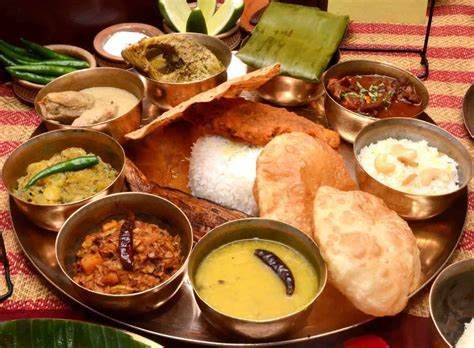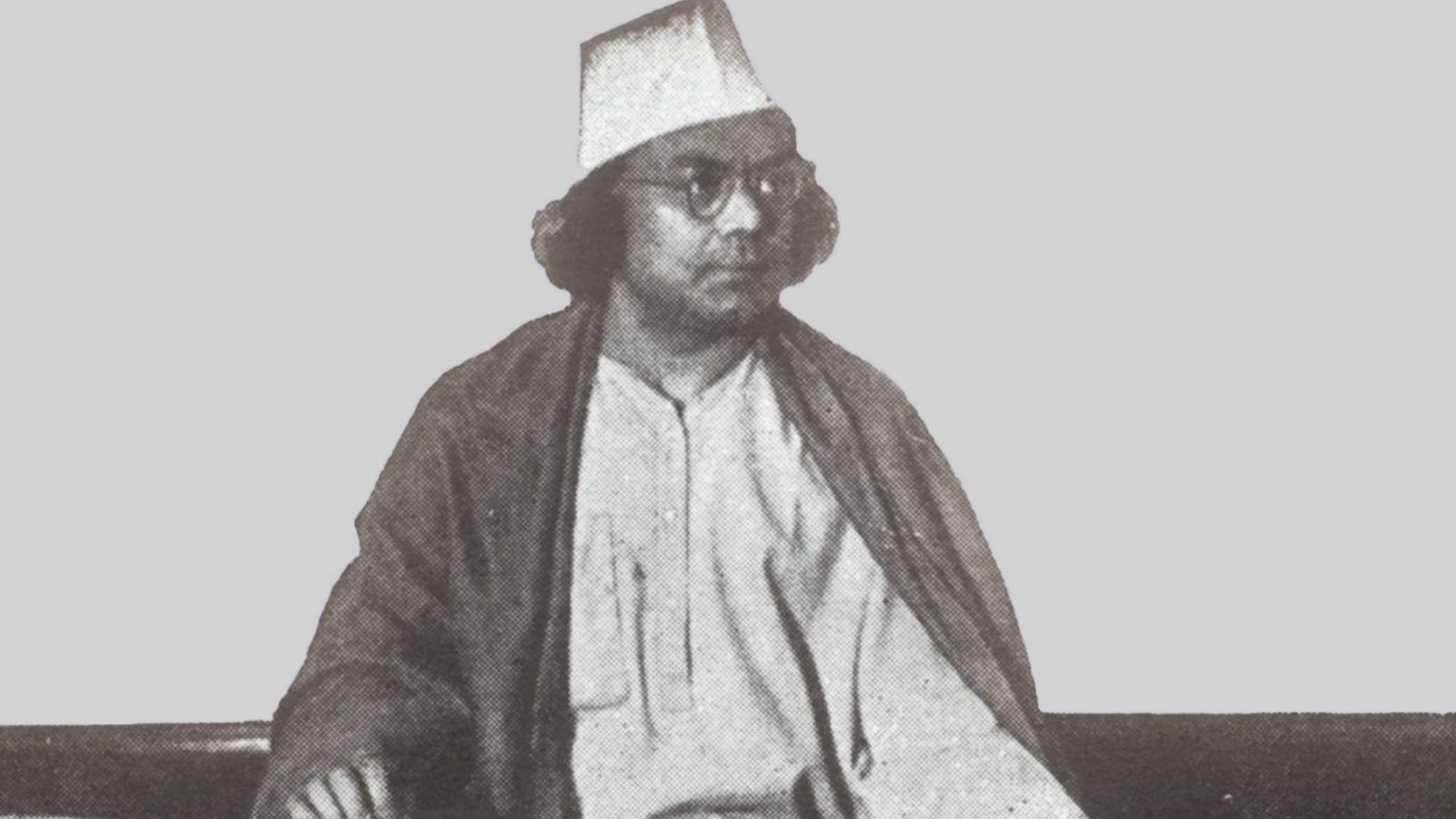Bengali food that originated and evolved in the region of Bengal situated in the eastern subcontinent of India (presently divided into West Bengal in India and a separate nation called Bangladesh) is rich and varied in its platter starting from snacks to main courses to sweets. Breakfast As rice plays a prominent role in a Bengali platter, it has its reflections in breakfast also - the form may differ though. Traditionally a usual day breakfast may comprise of rice in puffed form called ‘muri’, in beaten form called ‘chira’ or in fried form called ‘khoi’. Vegetables, milk and fruits are also consumed during breakfast. In rural areas the rice left over after dinner is kept in a pot with water in it which gets slightly fermented the next morning. This rice popularly called ‘pantha bhat’ is consumed as breakfast the next morning and is a very common form of breakfast in villages. Special wheat-based items like luchi (round and small in shape, deep-fried and puffed homemade bread), porota (triangular or round pan fried homemade bread with or without stuffing) and kochuri (stuffed luchi) served with hot dal or alurdum (a spicy and extremely luscious dish made of potato) are some of the items that are usually prepared during weekends, holidays or on special occasions. The stuffing can be different, but the most usual is peas and dal. However along with the traditional dishes Bengalis have also incorporated healthy and less time consuming breakfast items of the day such as oats and cornflakes among others. Lunch/Dinner The course-wise lunch or dinner more or less comprise of similar set of items such as dal, vegetables, non-veg items like fish or meat and desserts barring a few changes. While the meal starts with a preparation of bitter vegetables and herbs called shukto during lunch followed by shak or leafy vegetables like palong, and spinach among others these two items are usually avoided during dinner. Shukto, which is considered to have high medicinal value can be a simple fry of different forms of bitter gourd or herbs like neem, a mix of steamed bitter vegetables with boiled potato or a well prepared and delicious mixed vegetable containing these ingredients. The latter often remains a starter in many of the Bengali occasions. Shak is generally consumed in fried form and sometimes added in mixed vegetables as well. Next come dal with a number of varieties like mug dal (split green gram), mushur dal (split red lentils), and arhar dal (split ed gram) among others complimented with mashed potato or deep fried vegetables called bhaja such as aaloo bhaja (finger chips), begun bhaja (fried brinjal) and potol bhaja (fried pointed gourd or parval). Sometimes these vegetables as also chopped onions are coated with besan and deep fried which are then referred as ‘tele bhaja’. Posto bora that is poppyseed paste deep fried in balls as also maacher dimer bora that is fish eggs specially that of ruhi and katla mixed with other ingredients and deep fried are some of the other delicacies that accompany dal on special occasions of the Bengalis. Naksha bori bhaja that is beautifully designed and sundried lentils made by rural women are also deep fried and savoured with dal. Items comprising of vegetable referred as ‘torkari’ follow which can be cooked alone, in combinations as also with non-veg ingredients. When it comes to vegetables, the Bengalis excel in preparing umpteen numbers of recipes from the varied choice of regional vegetables available round the year. Not only that they are quite accomplished particularly the ones from Bangladesh or migrated from there to West Bengal in preparing delicious and mouth-watering dishes made out of often rejected parts of veggies like leaves, peels and stalks. This section of Bengalis also thrive in making appetizing cuisines like bhapa (steamed) fish and vegetables that are prepared in different fuel-efficient procedures like placing such items in a covered bowl atop pot of boiling rice. Coming back to vegetables, some purely veg dishes include doi potol, mochar ghonto, chorchori, alurdum, dhokar dalna, lau ghonto, chanar dalna and many more. Dishes like chhyanchra, lau chingri, echor chingri, potoler dolma/dorma are prepared using a mix of veg and non-veg items. The next course in line would be one or more non-veg items that are generally segregated into jhol, a light stew like preparation; jhal, a more spicy and hot one; kalia, a rich and gravy preparation; and korma, a more sweetish form. Some of the most revered fish delicacies of Bengal include ruhi maacher kalia, tel koi, chitol maacher muitha ,ilish maacher paturi, ilish maach bhapa, pabda maacher jhaal and chingri maacher malaikari among several others. Mutton preparation like kosha mangsho or hot and spicy meat and kochi pathar jhol are among the favourite dishes of the Bengalis, especially enjoyed during lazy weekends and other occasions. After the main dishes comes the sweet and sour chutney, a slightly thick and saucy item that can be made of tomatoes, pineapple, papaya, mango, tamarind or with a mix of different fruits including the dry ones. It is generally complimented with a papor or papadum which is made of dal or sago or potato generally roundish in shape either deep fried or roasted. Last but not the least comes the sweet dishes. Bengalis are famous for their vast variety of sweet items starting from misti doi (sweet curd), rosogolla, variety of sandesh, payesh (rice in thickened milk) and many more. New rice, rice flour, khejurer gur that is date palm syrup, milk and coconut are used to prepare a variety of sweet dishes during Poush Sankranti which falls in the Bengali month of Poush when the Bengalis celebrate the harvest festival called ‘Poush Parbon’. Some of the most famous and mouth-watering dishes prepared during this time are pati sapta pitha, puli pitha, Gokul pitha, chitoi pitha and payesh among others. Snacks Traditional snacks of Bengalis are also varied such as muri with tele bhaja; jhal muri (muri mixed with chopped onion, boiled potato, cucumber, tomato, different spices and other ingredients); chira bhaja; and singara (samosa) that is a dry potato torkari which may also include peas and cauliflower during winter stuffed in a wheat envelope triangular in shape and deep fried
Bengali food
Jesica Sen
||
Post On > Jul 5 2023 ||


Music in the Rain: A Symphony of Emotions
2025-07-09 12:33:24

tekken
2025-07-07 04:04:31

wwe
2025-07-07 04:02:56

Music in the Rain: A Symphony of Soul and Sky
2025-06-25 10:50:36

Nazrul Sangeet: The Soulful Voice of Revolution and Romance
2025-05-21 11:01:03

The Power and Passion of Nazrul Songs
2025-05-14 15:54:19